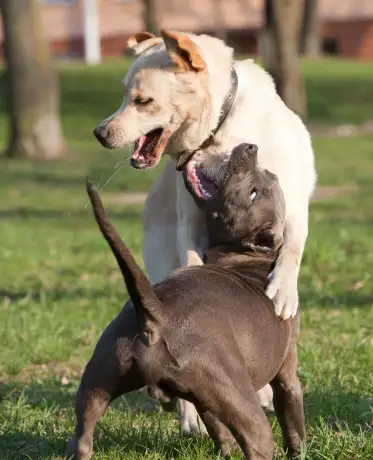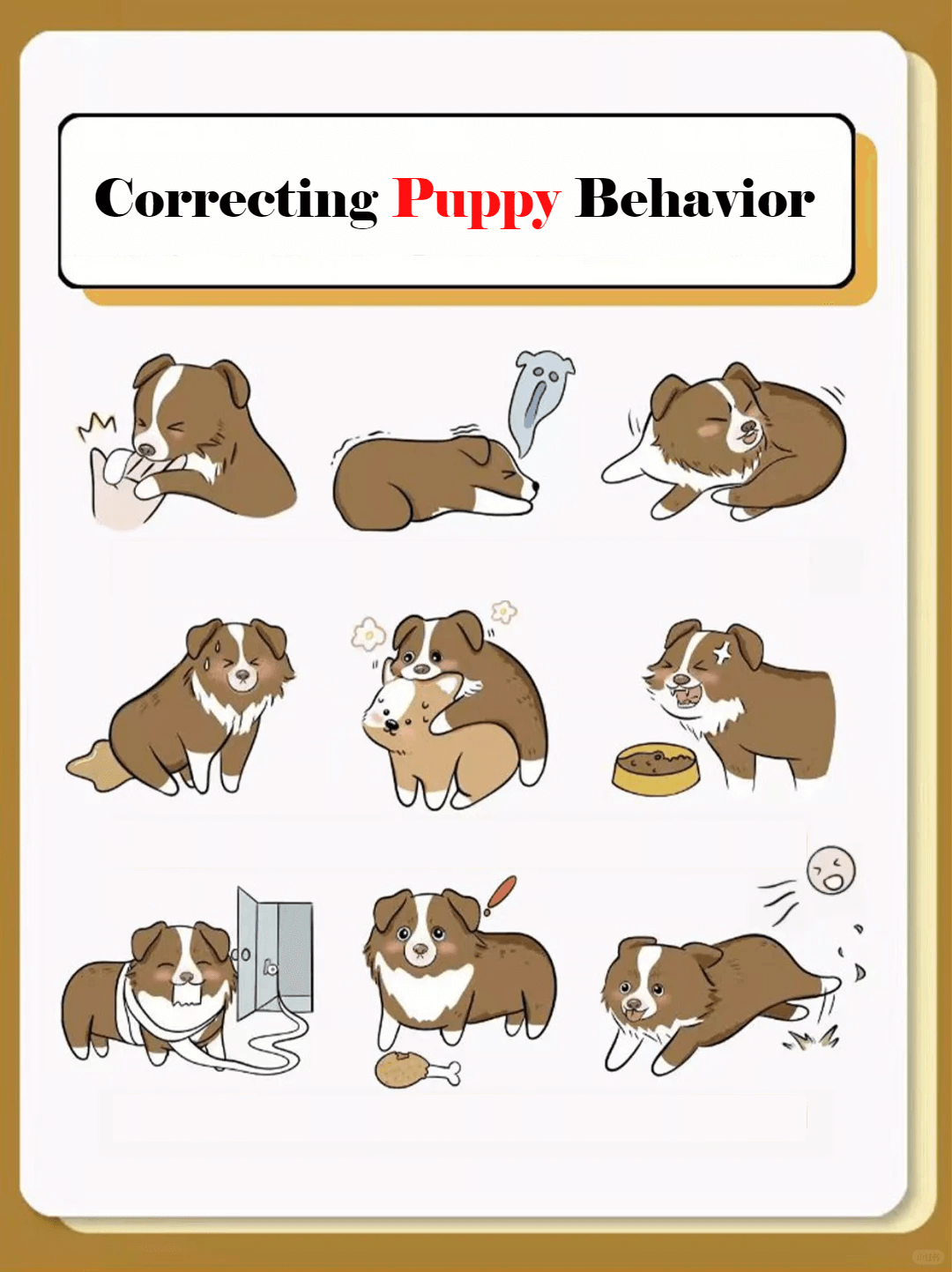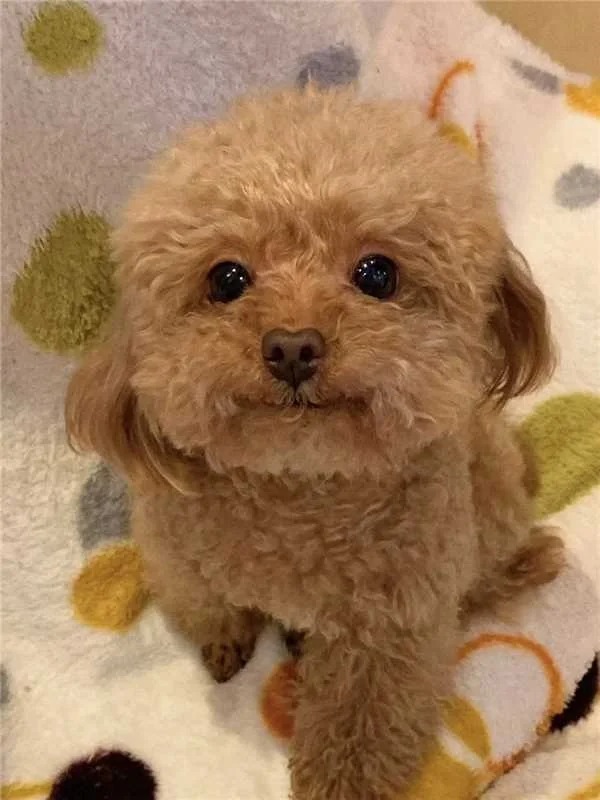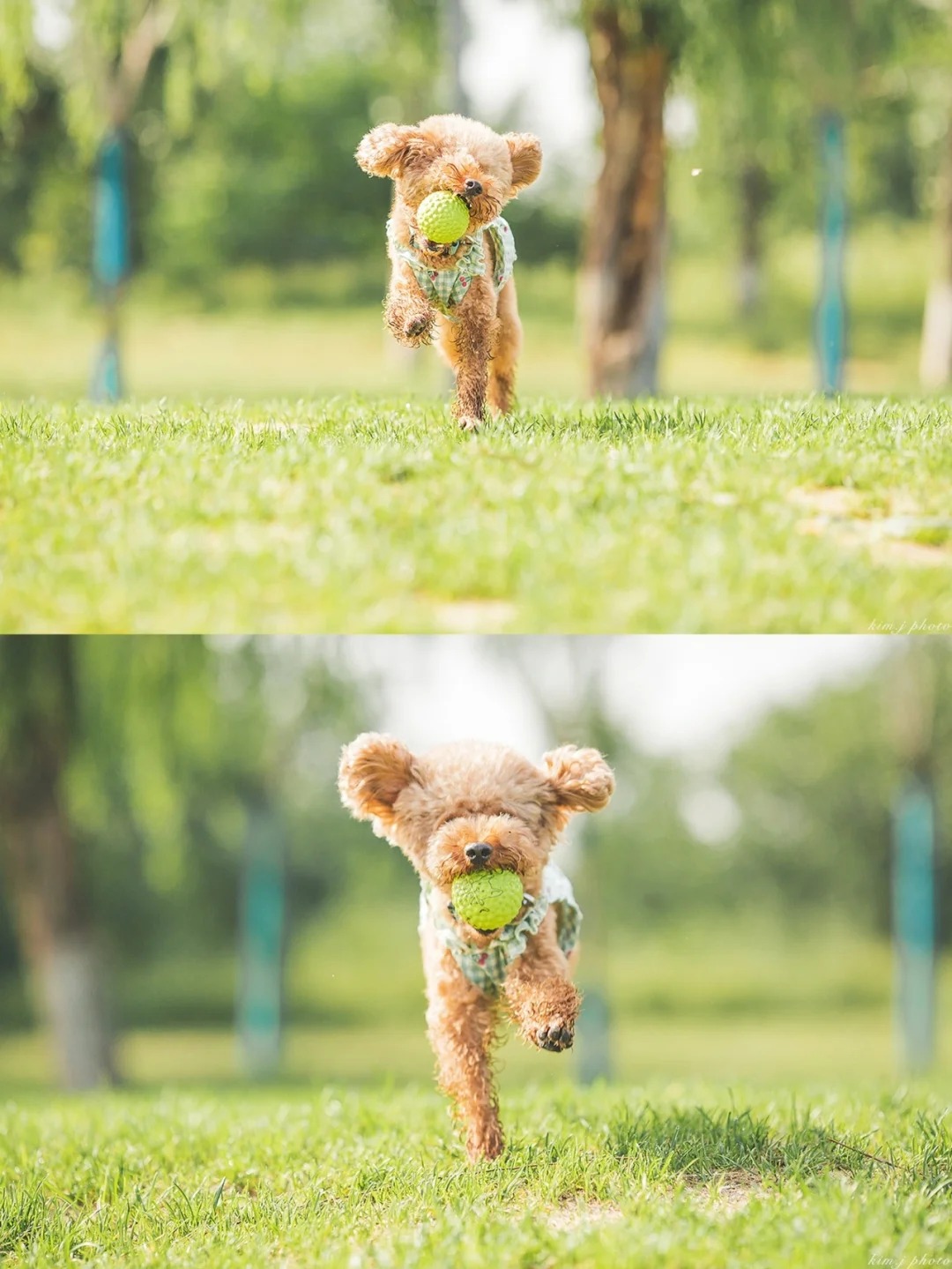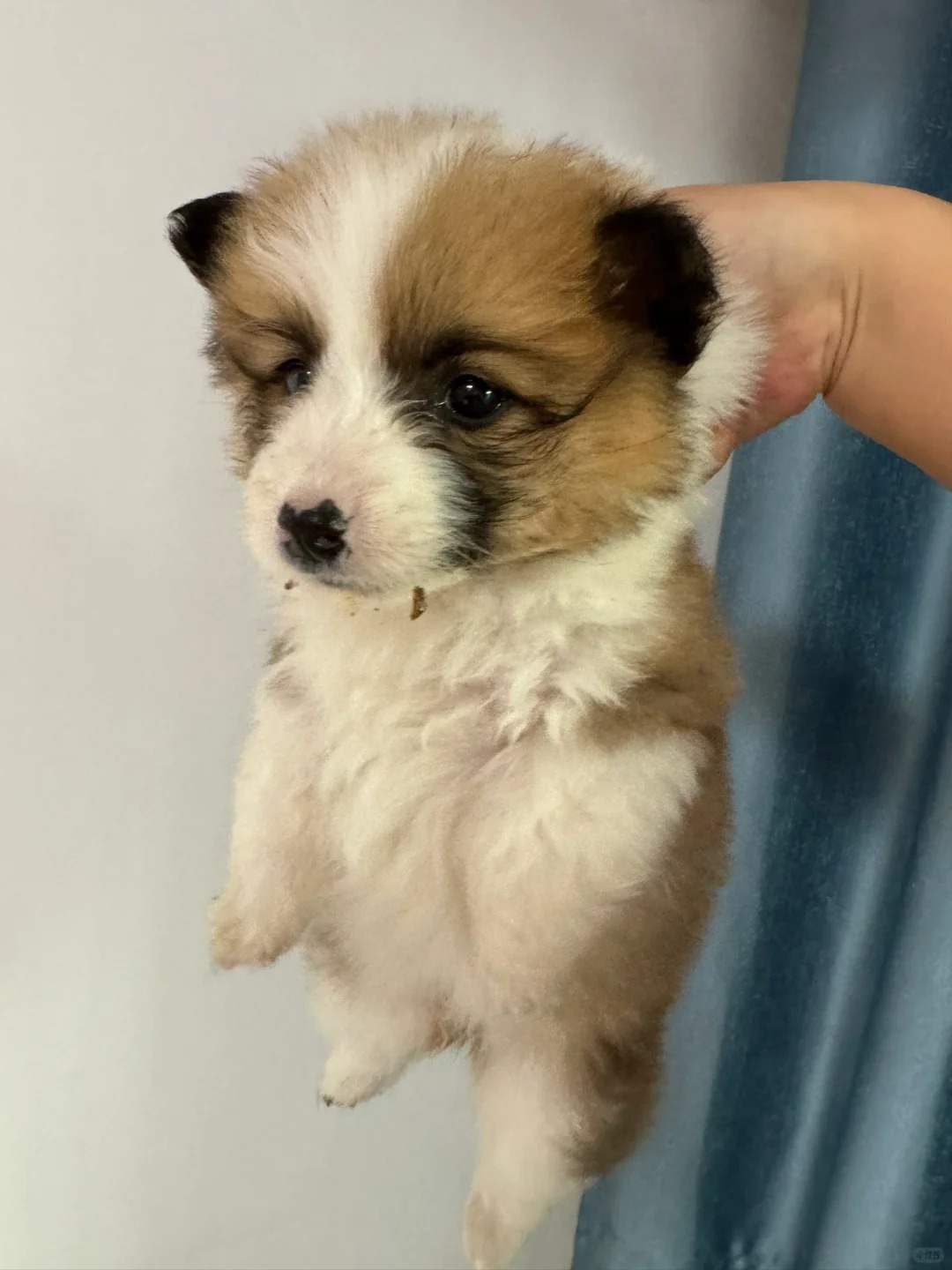**Dogs Fighting: A Real Headache for Dog Owners** 🐶🐾
Having dogs that fight can be quite troublesome for many dog owners. We often hope that dog gatherings will provide social interactions for our pets. Yet, instead of mingling with others, some dogs just want to fight, causing us owners to be on high alert. Instead of letting them play freely in the park, we have to supervise every interaction.
## Are Dogs Fighting Right or Wrong?
It's surprising to find that some people believe dog fights are completely natural. "Dogs need to assert their dominance; male dogs fight to establish hierarchy," they say. Others think it's cool to own a fierce dog, believing early fighting builds masculinity and toughness. To those training guard dogs this way, I must say: this isn’t the proper way to train a guard dog. Guard dogs require extreme obedience, not mindless aggression. A properly trained guard dog should execute commands precisely, attacking and releasing based on the signal. Only professionals should train guard dogs.
To the first group, I’ll also say: dog fighting is not normal social behavior. It’s an incorrect form of social interaction.
## Why Do Dogs Fight in Daily Life?
1. **Fear and Stress:** Dogs might fight to release pent-up stress. For example, small dogs often act aggressively towards larger dogs out of fear.
2. **Resource Guarding:** Fights can erupt over toys, food, or water during playdates.
3. **Dominance:** A dominant dog encountering another dog of similar size might attack to establish its status.
4. **Unstable Energy:** An overly excited or nervous dog could provoke attacks from others.
5. **Negative Energy:** Prolonged lack of exercise, anxiety, or frustration can make a dog highly unstable and prone to aggression.
6. **Jealousy:** Dogs might attack other dogs that show affection towards their owners, or when they misinterpret new dogs as threats.
## Recognizing Correct Body Language and Social Etiquette
**Dog whisperers** tell us that there are four main responses in dog interactions: attack, flee, submit, and avoid.
1. **Attack:** Dogs fight for various reasons.
2. **Flee:** One dog senses another’s energy and decides to run away.
3. **Submit:** A dog lies down to show submission.
4. **Avoid:** A dog evades another by moving behind its owner.
**Correct Social Etiquette:** Relaxed, calm body language. Dogs approach each other calmly and sniff each other's anal glands to gather information about each other's energy and personality. If they are compatible, they play; if not, they go their separate ways. It's like humans greeting and shaking hands.
**Incorrect Social Etiquette:** Tense, stiff posture with forward-leaning head and chest, erect ears, and direct eye contact signal impending aggression. Curled body, trembling, and low growls with bared teeth show fear, leading to potential attacks.
Pouncing like a predator shows play but might be misinterpreted, leading to fights.
## What to Do About Fights?
Dogs don't start off wanting to fight. Puppies play well together, but this changes as they grow older and “learn bad behaviors.”
**Are You the Leader?** As a leader, you should protect the group and handle threats. If you're not the leader, your dog will feel the need to assume that role. A true leader controls the situation, correcting improper social behaviors and instability.
**Daily Interactions:** How do you react when your dog misbehaves? Anger, frustration, and punishment can teach your dog that aggression is the way to solve problems. Your dog might learn these negative behaviors from observing how you handle conflicts in your household, or from playing with aggressive dogs at gatherings.
**Preemptively Interrupt:** Early interventions, when aggression is just starting, are more effective. Catch and correct them before they fully engage with aggressive energy. Recognize the signs and interrupt incorrect behaviors early.
**Training Both Attack and Non-Attack Behaviors:**
Aggression, learned socially, is a form of "training." So, how do you respond when your dog opts for aggression? Do you calmly and firmly show your dog that aggression is unacceptable? Do you express disapproval of aggressive behavior? Can you interrupt the buildup of aggressive energy? Or do you lack this understanding, merely pulling on the leash and shouting in fear?
Misbehaviors should be clearly interrupted. At early stages, when aggression isn't fully developed, don't play tug-of-war as it heightens aggression. Instead, disrupt the behavior through lateral movements to destabilize. For highly aggressive dogs, force them to submit by making them lie down.
Consistency is key. Each wrong move needs stopping and refocusing on you. Offer rewards for correct actions, teaching non-aggression through positive reinforcement.
## Summary
A dog that "loves to fight" is shaped by your "training." Strengthen your leadership skills, provide ample healthy exercise, teach proper social etiquette, avoid problematic dogs, and interrupt incorrect behaviors early with healthy alternatives.
Over time, your dog will show normal social behaviors, becoming calmer, less anxious, and truly happy.
